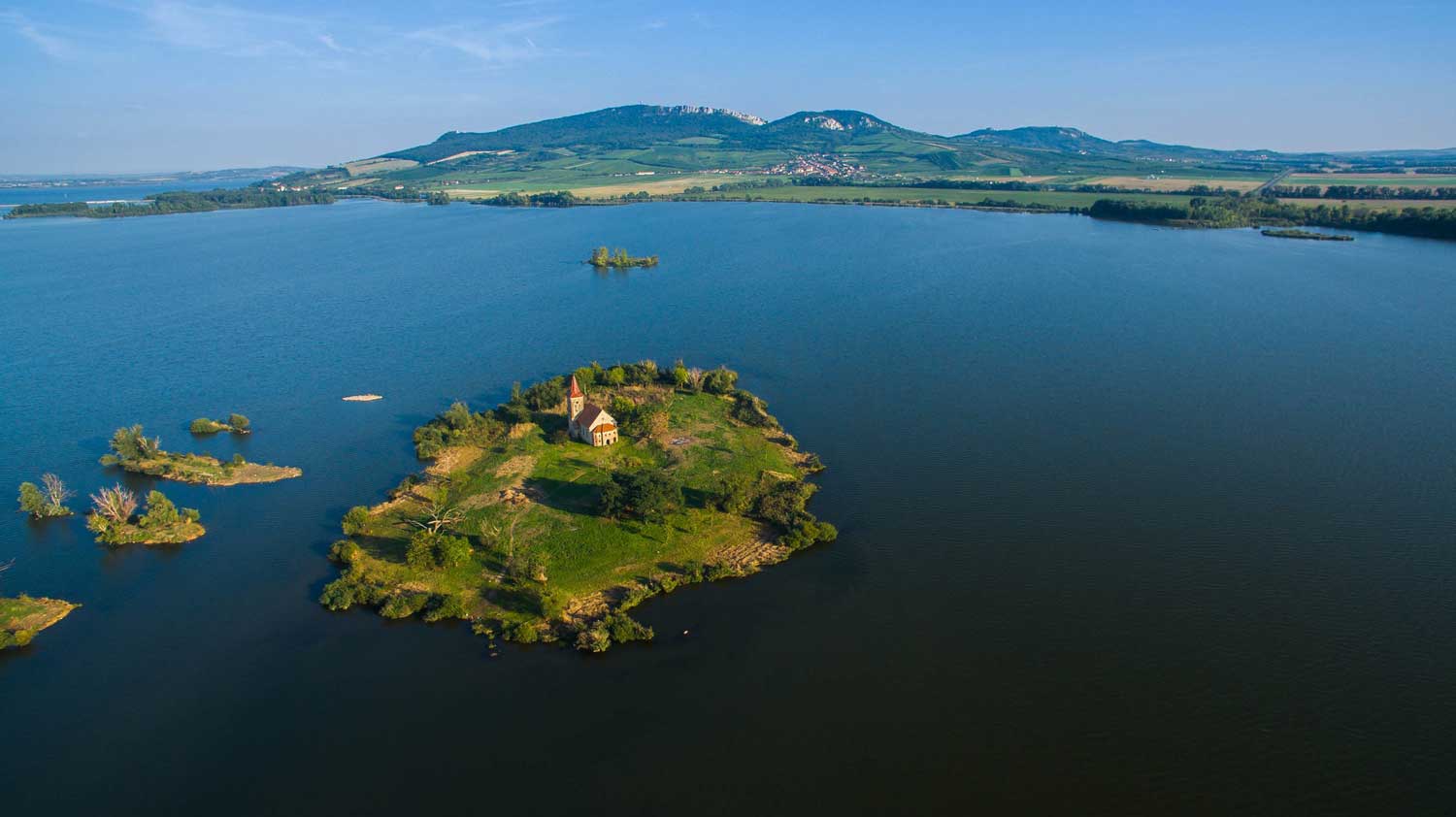About Pasohlávky
The picturesque village of Pasohlávky lies right at the shore of the Nové Mlýny reservoirs. The municipality is well-known all over the Czech Republic, mainly thanks to the largest camping site in the country (Autocamp Merkur Pasohlávky), as well as the aquapark Aqualand Moravia, located at the camp’s central entrance.
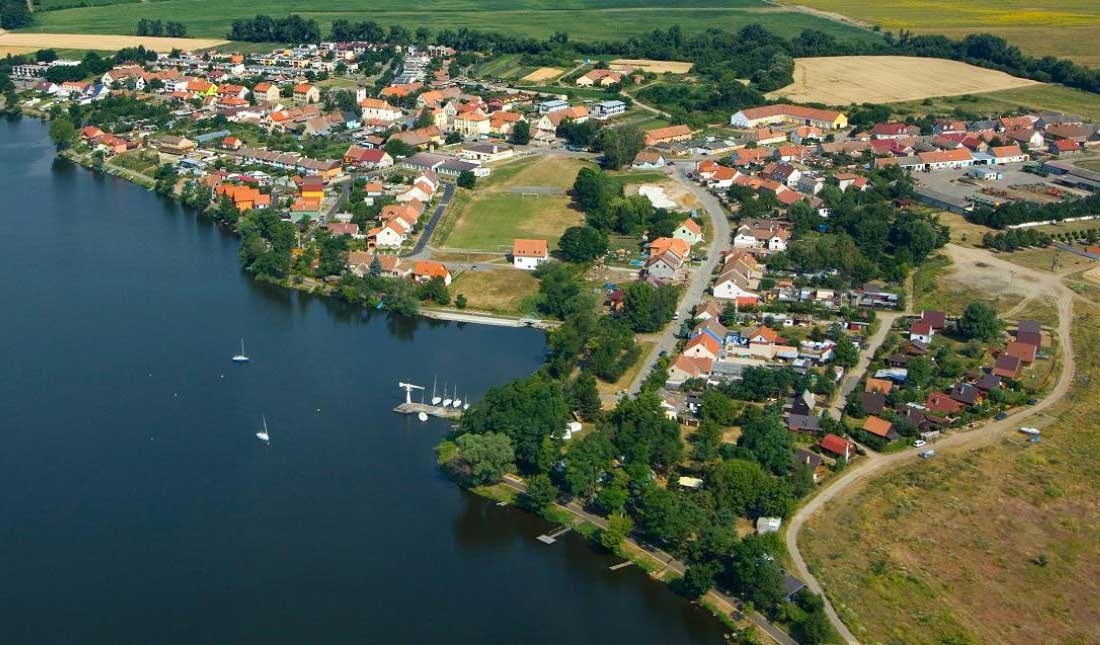
The camp and the aquapark are, however, by far, not the only points of interest in Pasohlávky. The village is a true gem in the midst of unique and extensive water area, offering a range of cycling routes as well as hikes with stunning views (e. g. Pálava Hills). Last, but not least, Pasohlávky is a typical Moravian village with a strong wine producers’ community, taking pride in beautiful wine yards and welcoming cellars.
Still, this is just a fraction of what the village offers. Pasohlávky cannot be described in words, it must be experienced life and in full.
Village history
In the oldest written documents, the place is mentioned as Uherčice na Bílém břehu (Uherčice at the White Bank, later reflected in the German name Weisstätten). In 1276, it was part of Dolní Kounice monastery that gained it from the Stará Boleslav Chapter. The settlement structure of the village had a central road enlarging, in the eastern part, to a village square with a chapel. During the wartimes, in the 15th century, it became dilapidated and was not resettled until mid-16th century with a newly arrived population. In 1574, Pasohlávky had 33 inhabitants and one village homestead. After the battle of White Mountain, the village got confiscated by cardinal Francis from Dietrichtein, who joined it permanently to Vlasatice homestead, part of larger Dolní Kounice manor. Later, during the Thirty Years’ War, it was one of the most extensively devasted places in the Břeclav region. Of the original 43 inhabitants only 9 survived. The renewal of the village was, nevertheless, quite prompt and, at the beginning of the 18th century, Pasohlávky had 48 inhabitants again. The 1763 census counted 397 inhabitants, 80 families of which were of peasant and 26 of subordinate status. The population of the village reached its peak in 1930 with 1 021 inhabitants. The latest census from 1st January 2015 counted 743 people with permanent address.
After the introduction of a new political administration of the Austrian Empire in 1850, Pasohlávky became part of the juridical and political county of Mikulov and remained so until 1960, when Břeclav county got established. With this formal affiliation, the village went through the occupation by the German army lasting from 8th October 1938 to the end of the WWII on 7th May 1945.
In the pre-war times, the municipality had German-speaking population mainly (93,6 %), all of which counted among the most nationally conscious in the Mikulov are. As a result, the community was, after the end of the war, resettled and its properties confiscated. This involved 1 549,3 out of total 1 594 hectares of land and 230 out of 242 street numbers. The village represented one of the longest resisting places in the region, and following the long, severe fights, it was conquered only at the very end of the war. The combat left 162 houses destroyed completely and 72 damaged severely. For that reason, only 37 families came back later in between 1945 and 1964, and, despite some organised resettlement, the village population continued decreasing. In 1950, there were only 282 people, that is 27,6 % of the pre-war number.
The village was later affected by the administrative changes related to the construction of the Nové Mlýny reservoirs. As a result of the physical removal of Mušov village in 1976, Pasohlávky became the seat of a local committee shared by both villages. This was dissolved on 1st January 1980, after Mušov actually ceased to exist. It was Pasohlávky and Pohořelice that became the new home for the greater part of Mušov inhabitants then.
Municipal Buildings
The Vicarage
A building originating in the earliest era of the settlement – in 1276. In the 16th century, the non-catholic religion dominated the village. In 1612 then, the Babtists arrived and founded a common house for themselves. They were later expelled after the imperial regulation, issued in 1622, directed against all non-catholics (the last mention of the catholic community in Pasohlávky comes from 1620). The village parish office was renewed in 1885.
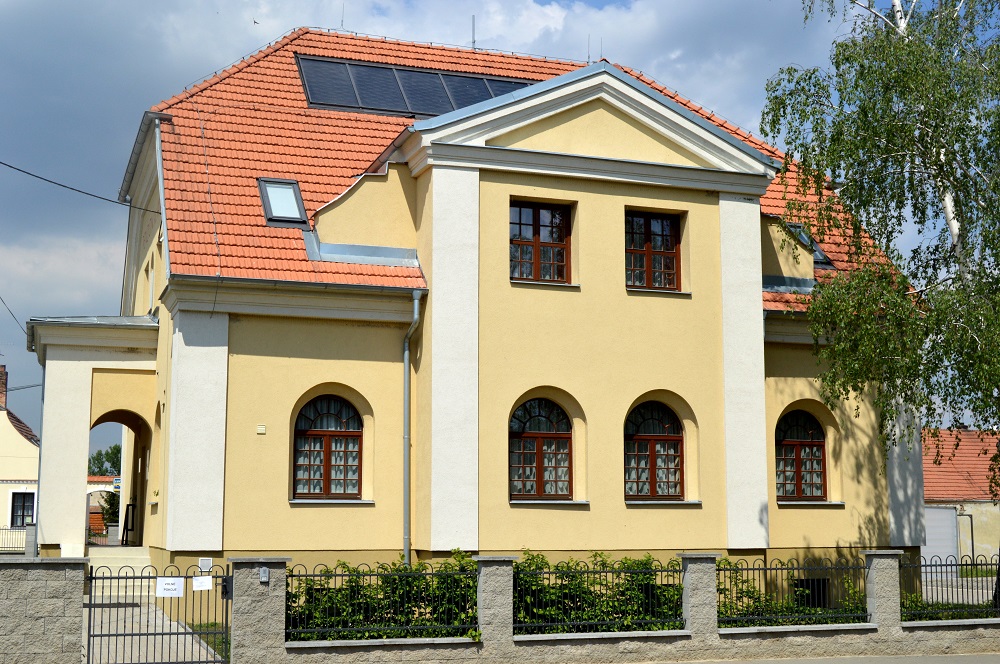
St. Anna Church
The chapel, originally of Holy Spirit, undergone in 1675 a reconstruction and was devoted to St. Anna – the act of which was recorded only later, in 1691. In 1811, the building was further developed into a church and, seven years later, a tower was added. In the outside premises of the church, the 18th century St. John of Nepomuk sculpture, listed as part of the national heritage, can be found.
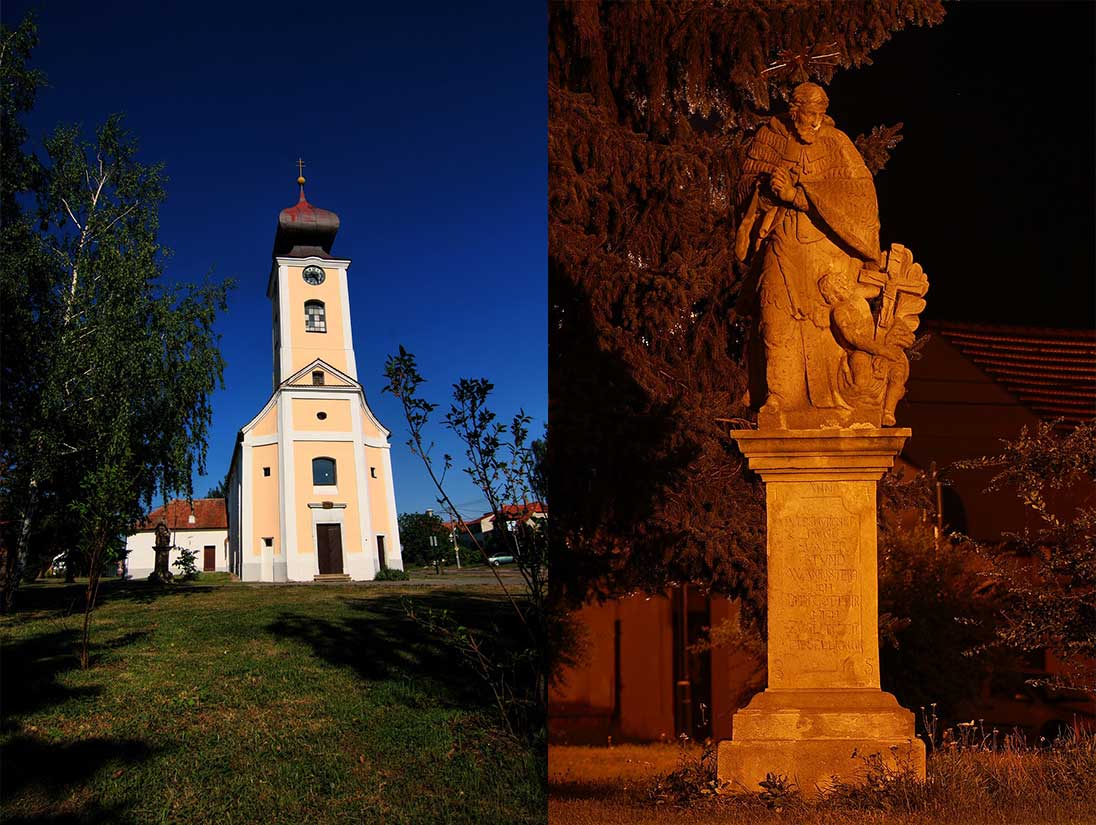
School
The institution was established in the village in 1788 and the school building was built in 1883. The current building of the kindergarten and primary school comes from 1993. Starting from 1st January 2011, it is formally part of Pohořelice primary school. Children from Pasohlávky can attend the 1st and 2nd grade in the village and later continue with their education in Pohořelice.
Village symbol
Historically, Pasohlávky’s seal consisted of two symbols: crayfish (marking the proximity of the river Dyje) and wine knife (symbol of wine making). A new symbol was assigned to the village following the decision of the Deputy Chamber chairmen on 19th June 1995. It reflects the successorship of the deceased village of Mušov: the emblem is divided, the upper silver part above blue wavy base shows a lying red crayfish, the lower red part has a wine knifer on the right and a wooden boat with an acorn growing on a two-part stem on the left. The later coming from the original Mušov village symbol.
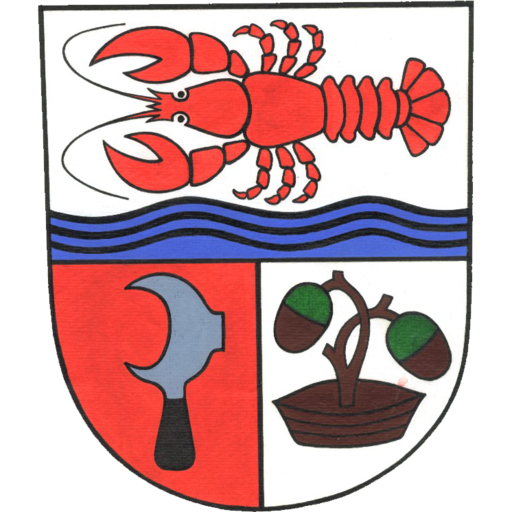
Flag
The flag was assigned to the village with the act no 23 of the Deputy Chamber Chairman on 19th Feberuary 1998. It is formed by two stripes: white and blue. In the flagpole part, there is a red crayfish with claws directed at the pole. The sides of the banner are 2:3 in size.
Historical monuments
Hradisko:
Officially the highest point in Pasohlávky municipality (220 mamsl). The area is known especially for the excavations of Roman coins in 17th and 18th century. The origin of these was later fully specified by the research done in 1926-1928. At that time, a Roman camp from the era of the emperor Marcus Aurelius was found, including numerous bricked buildings. All of these were of military purposes and, as the findings suggested, they testify to the presence of high-ranked officers of the X. Roman legion, which was, since the 2nd century A.D., settled in Vindobona (Wien nowadays). The legion probably used the camp until the peace agreement, terminating the Marcomannic wars. The burnt clay bricks of the buildings were marked with the letters of the Roman legion Legio decima Gemina Pia Fidelis from Vindobona.
St. Linhart Church:
The church is located at the island at the middle (of total 3) Nové Mlýny reservoirs. It is the last and only remaining residue of the ancient village of Mušov. As such, it has immense cultural-historical value. The Romanesque building from 12th and 13th century was later rebuilt in Gothic style. The southern wall of the nave with Romanesque portal and windows has been preserved. The research done in the current, already de-consecrated, Baroque-style building revealed Gothic wall paintings, including one from the 16th century.
